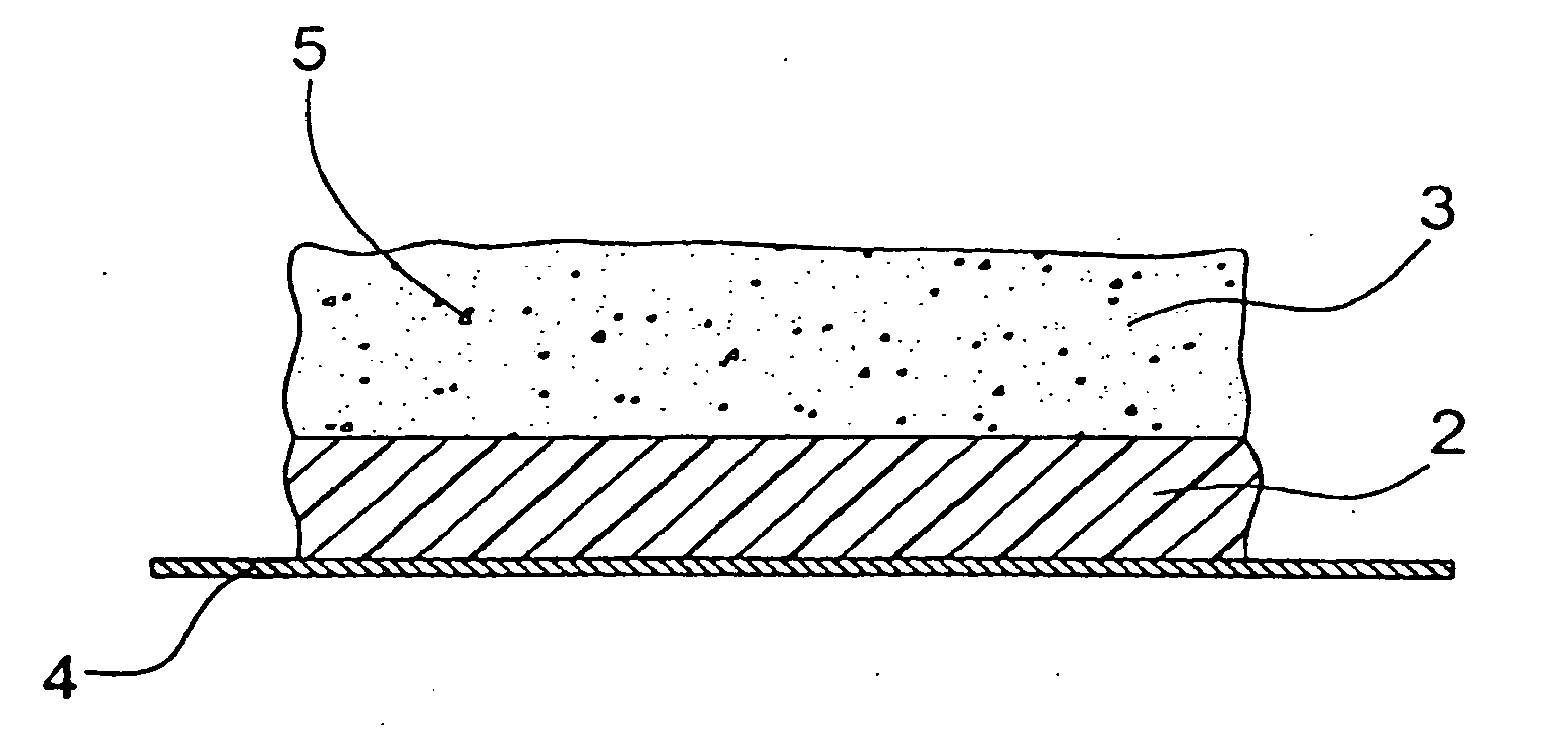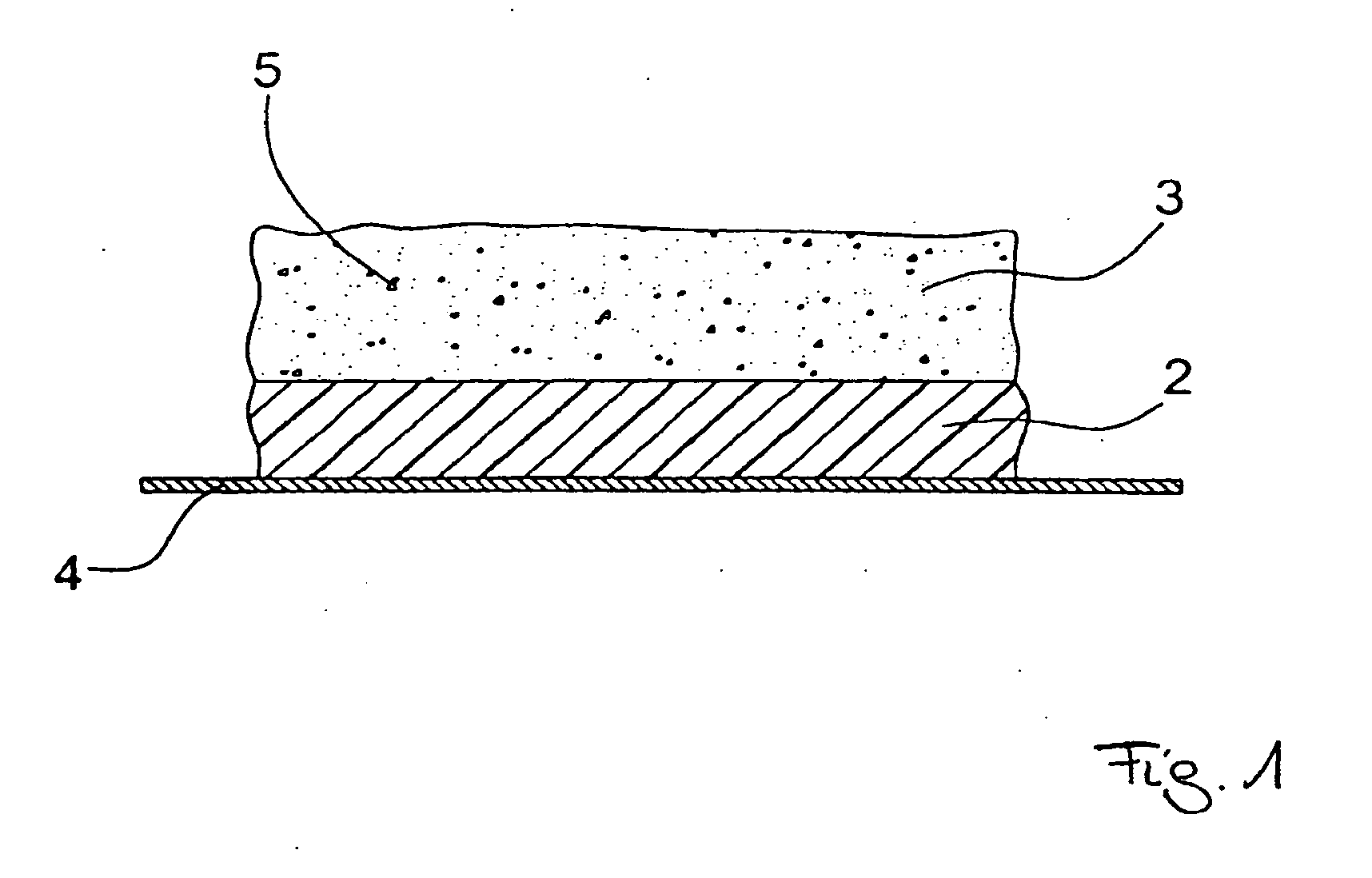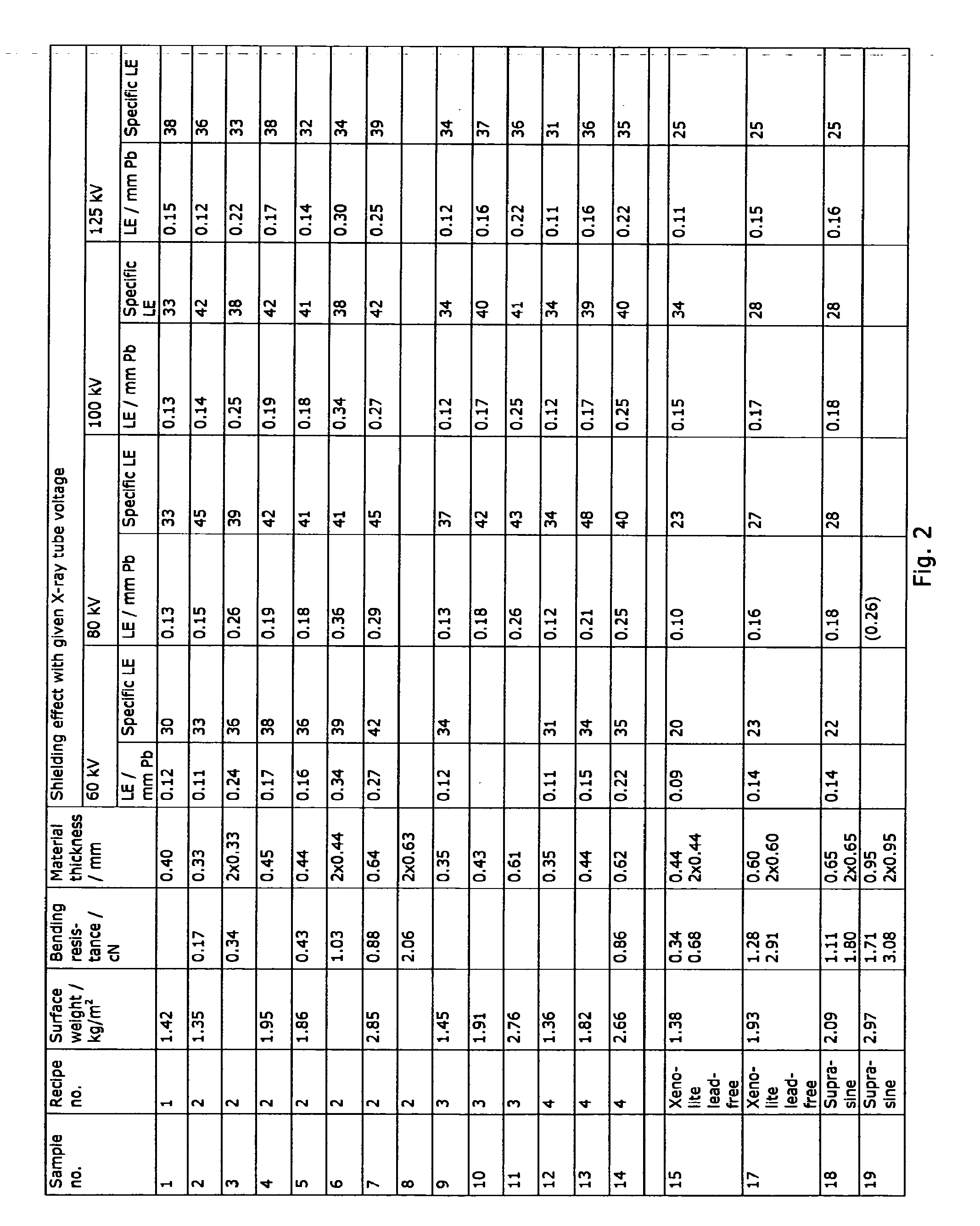Radiation Protection Material Method for Production of a Radiation Protection Material and Use of the Same
a radiation protection material and material technology, applied in the field of radiation protection materials, can solve the problems of toxic substances and impair the activities of persons wearing, and achieve the effects of facilitating the introduction of additives, and reducing the number of tears
- Summary
- Abstract
- Description
- Claims
- Application Information
AI Technical Summary
Benefits of technology
Problems solved by technology
Method used
Image
Examples
example
[0057]
Weight portions (g)Vestolit 1430 K903000TXIB (softener)60DINP (softener)1740Stabilizer60Total4860
[0058]The viscosity can be adjusted through variation of the portion of the softener TXIB.
[0059]Such a radiation protection material having a foil thickness of 0.35 to 0.4 mm and an overall surface weight of 1.35 kg / m2 achieves the following lead equivalent in accordance with the testing method IEC 1331.1 / EN 61331 in dependence on the tube voltage of an X-ray source:
0.14 mm Pb at 60 kV
0.15 mm Pb at 80 kV
0.15 mm Pb at 100 kV
0.13 mm Pb at 150 K
to obtain a specific lead equivalent, normalized to the thickness, of more than 30.
[0060]In contrast to the conventional radiation protection materials, the inventive radiation protection material shows no drop in the effective shielding degree at a tube voltage of more than 100 kV and is constant within the predetermined tolerance limits of the international standard IEC 1331-1 / EN 61331 over a voltage range of 60 to 150 kV.
[0061]The second fig...
PUM
| Property | Measurement | Unit |
|---|---|---|
| voltage | aaaaa | aaaaa |
| voltage | aaaaa | aaaaa |
| voltage | aaaaa | aaaaa |
Abstract
Description
Claims
Application Information
 Login to View More
Login to View More - R&D
- Intellectual Property
- Life Sciences
- Materials
- Tech Scout
- Unparalleled Data Quality
- Higher Quality Content
- 60% Fewer Hallucinations
Browse by: Latest US Patents, China's latest patents, Technical Efficacy Thesaurus, Application Domain, Technology Topic, Popular Technical Reports.
© 2025 PatSnap. All rights reserved.Legal|Privacy policy|Modern Slavery Act Transparency Statement|Sitemap|About US| Contact US: help@patsnap.com



